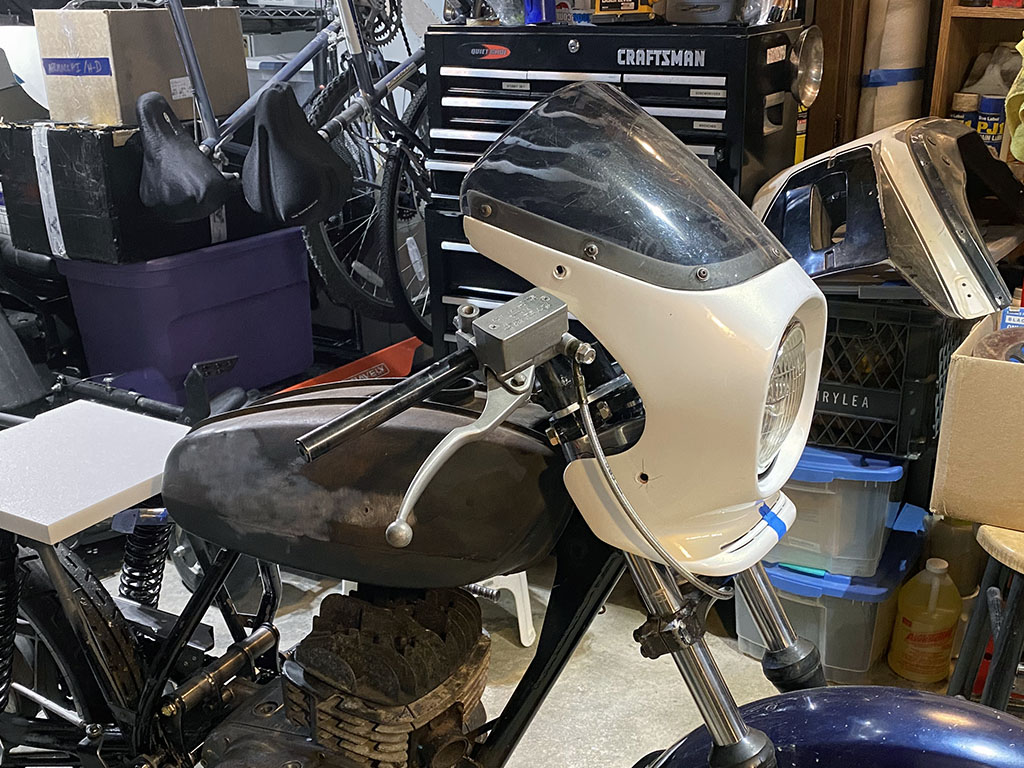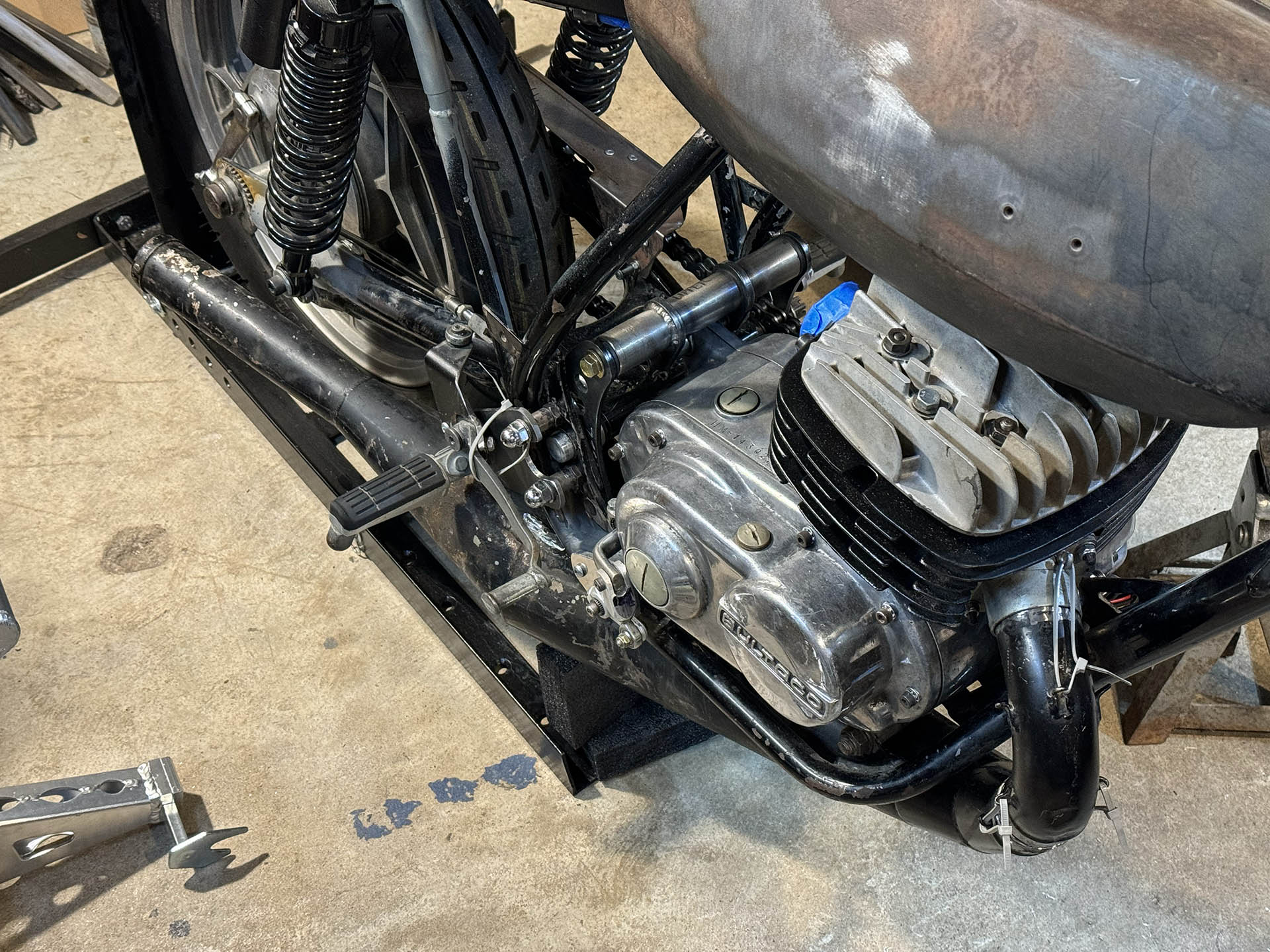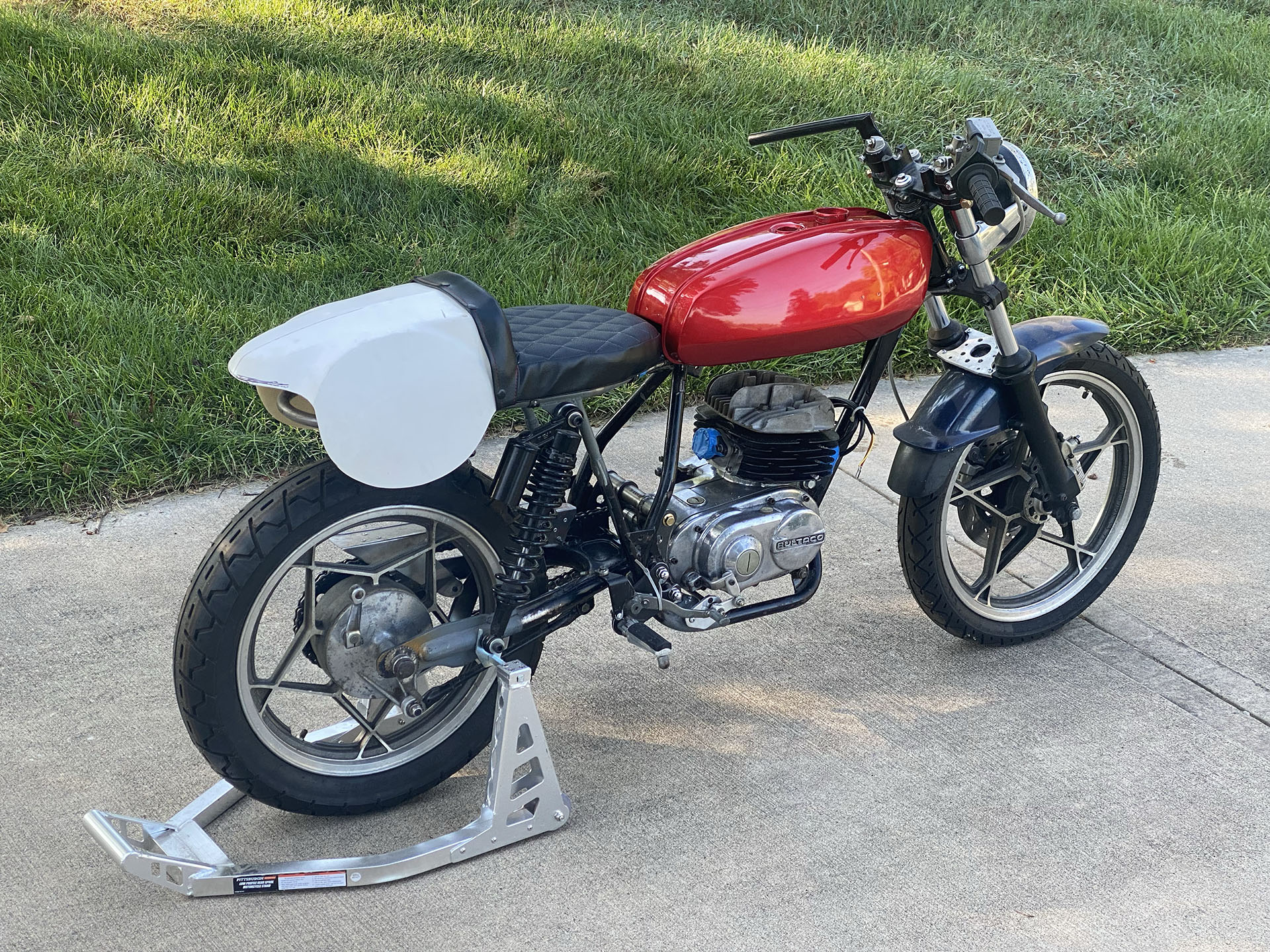I’ve never mounted a fiberglass seat before, so I might be going about this all wrong, but I knew I needed to add some sort of additional structure under the seat to support my weight. A wooden block seemed a bit kludgy, so I bought some 1″ thick HDPE marine board. I first cut it to just fit inside perimeter of the seat area. I then went to work on it with my router, using a 1/2″ rounding bit on the topside to match the inside curve of the seat edges.
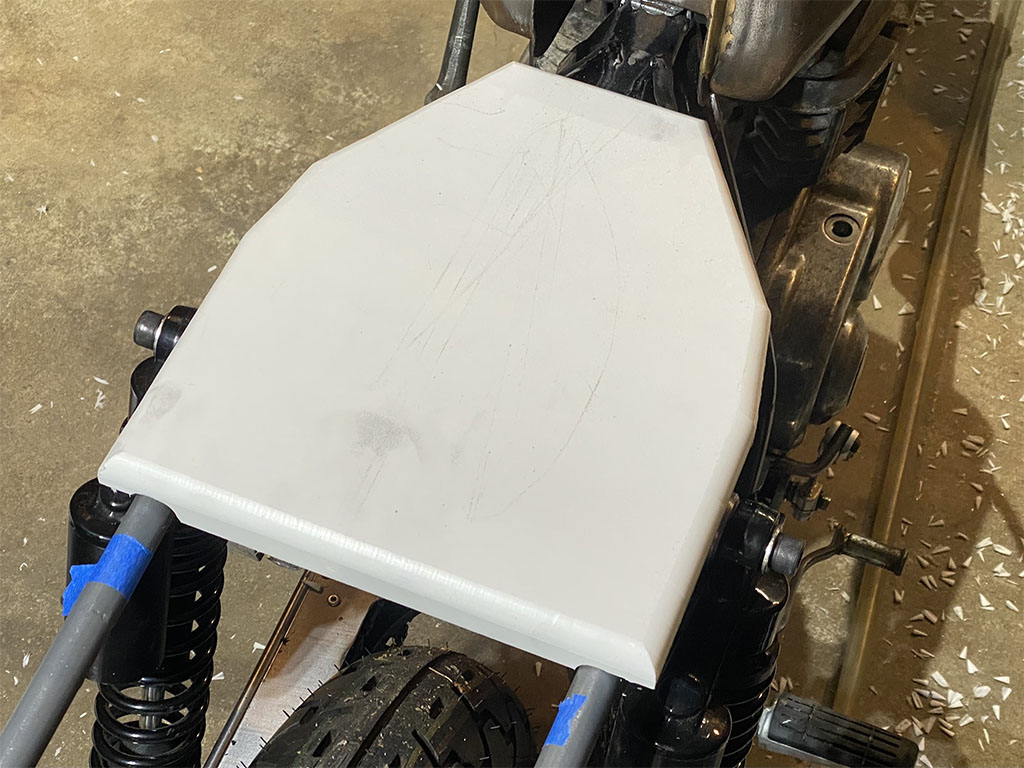
I flipped it over and used a 3/4″ half-round bit on the bottom to create pockets for the frame rails. The marine board was thick enough to show below the edge of the fiberglass, so I used a square bit to bring the outside level with the top of the frame reliefs.
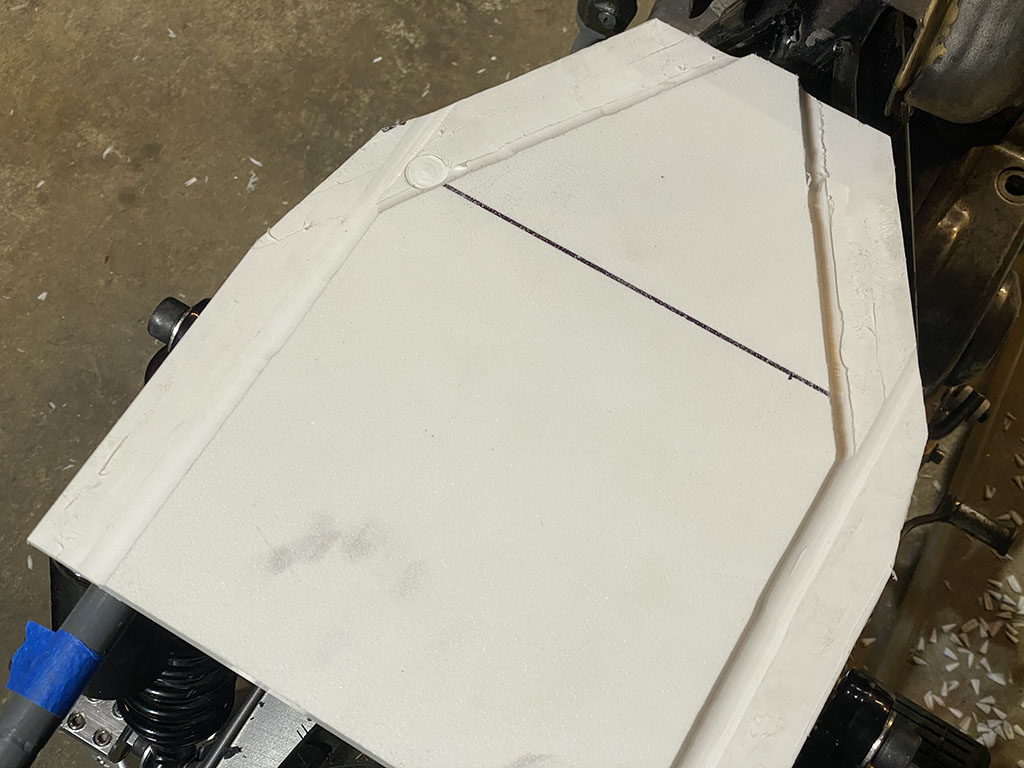
I didn’t like how wide the seat pan was at the front; it’s wider than the back of the tank which makes it look mismatched. So, I cut the seat base a bit narrower at the front, matching the angle of the frame tubes.

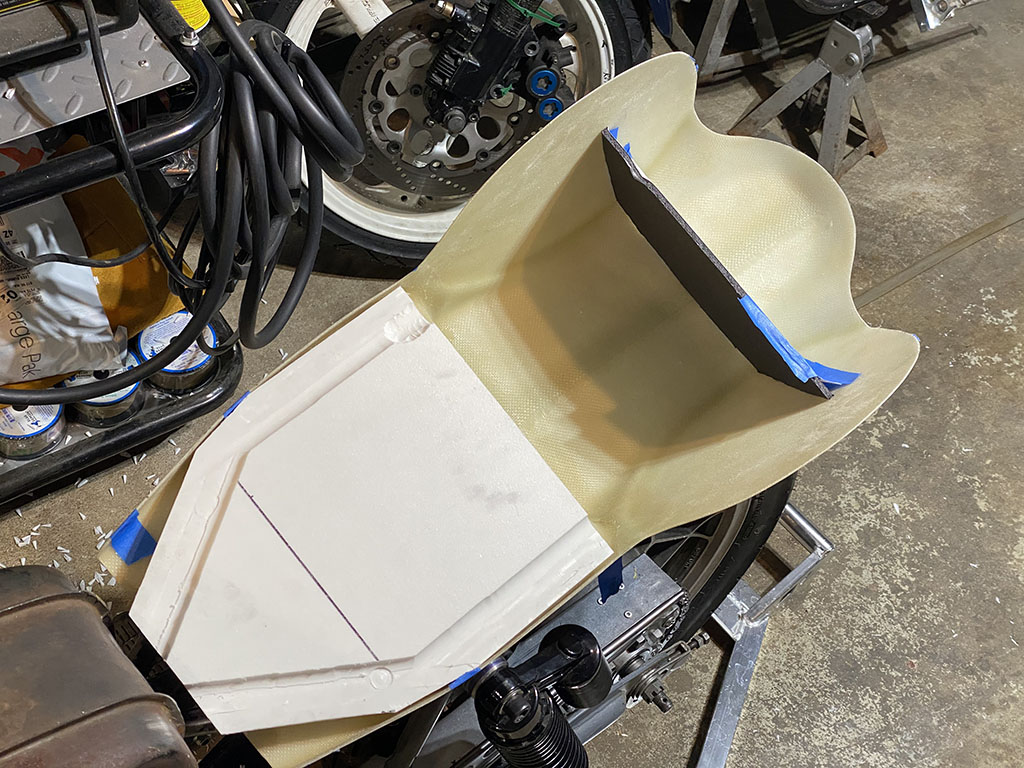
I’m really pleased that the fiberglass is fully supported to the edge by the HDPE. I can trim the corners off the seat base without losing any structural integrity and having the front if it get all floppy.
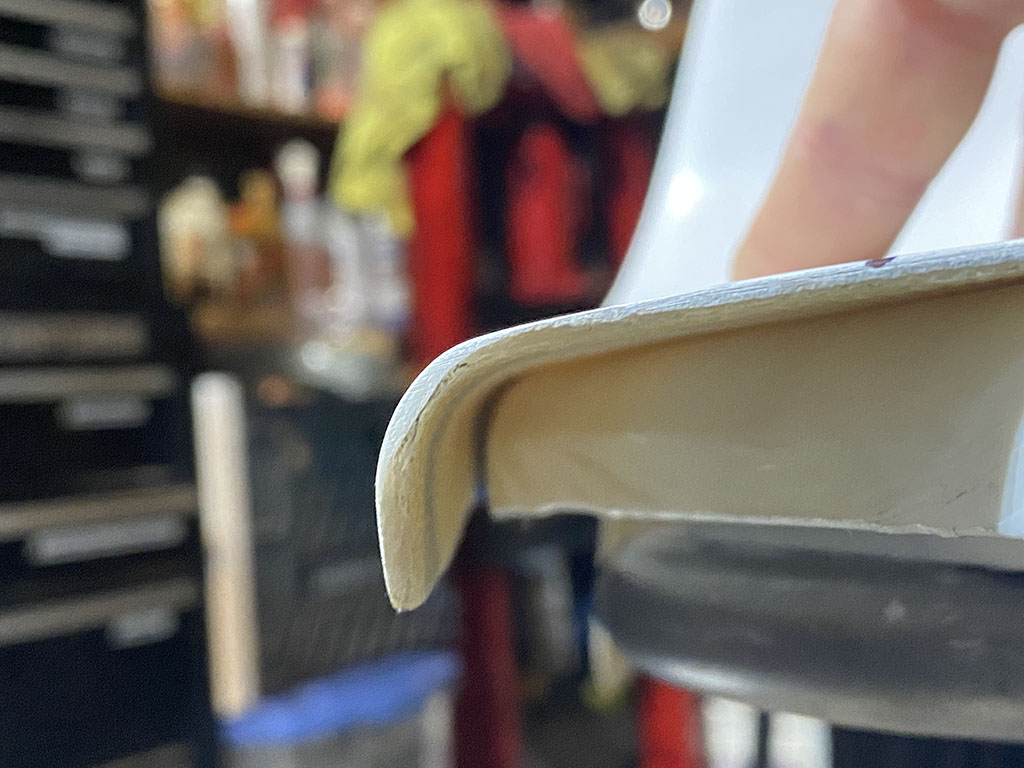
I am probably overbuilding this, but I’ve seen too many fiberglass parts that cracked due to excessive stress. The only downside this is the weight. It’s a seriously heavy board, but I will add some lightening holes to the center to remove some of the weight before it goes together.
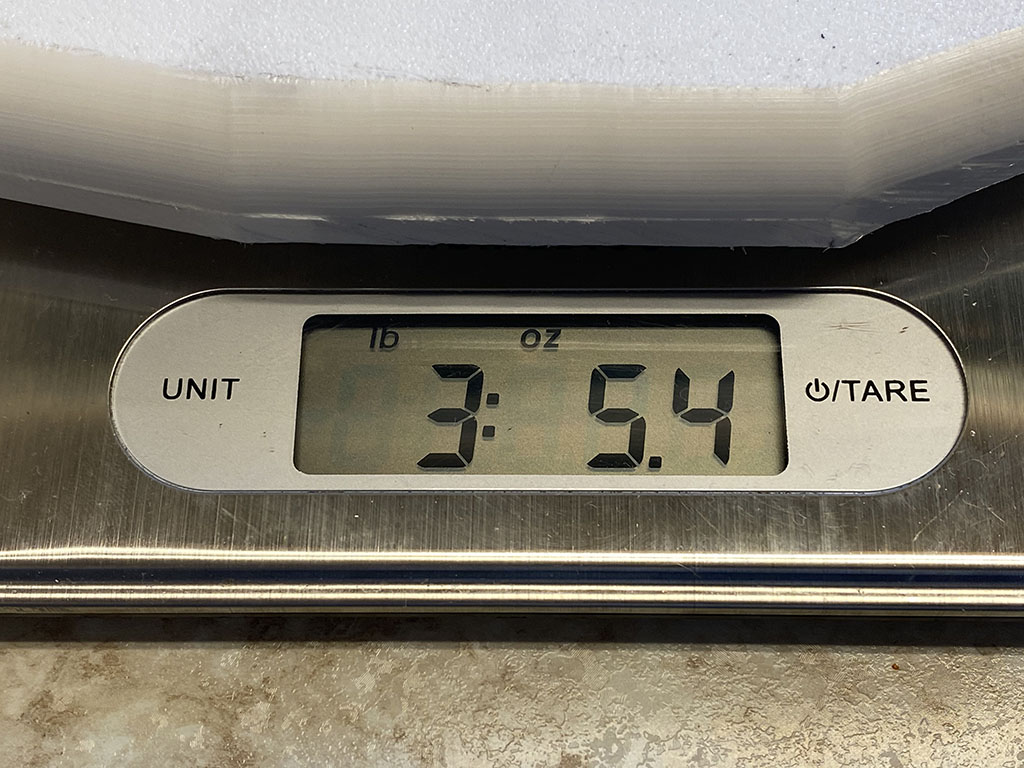
While I was in the garage, I took another look at Kawasaki AR80 fairing I bought a while back. I thought the number plates on the side might look out of place without a fairing. After swapping out the 7″ bucket for a 5-3/4″ headlight and mounting it up, I still think I’ll stick with a naked front end and the larger headlight.
